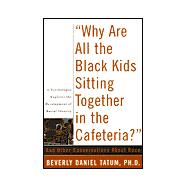
Note: Supplemental materials are not guaranteed with Rental or Used book purchases.
Purchase Benefits
What is included with this book?
| Introduction 1999 | p. ix |
| Introduction 1997 | p. xiii |
| A Definition of Terms | |
| Defining Racism "Can we talk?" | p. 3 |
| The Complexity of Identity "Who am I?" | p. 18 |
| Understanding Blackness in a White Context | |
| The Early Years "Is my skin brown because I drink chocolate milk?" | p. 31 |
| Identity Development in Adolescence "Why are all the Black kids sitting Together in the cafeteria?" | p. 52 |
| Racial Identity in Adulthood "Still a work in progress..." | p. 75 |
| Understanding Whiteness in a White Context | |
| The Development of White Identity "I'm not ethnic, I'm just normal." | p. 93 |
| White Identity and Affirmative Action "I'm in favor of affirmative action except when it comes to my jobs." | p. 114 |
| Beyond Black and White | |
| Critical Issues in Latino, American Indian, and Asian Pacific American Identity Development "There's more than just Black and White, you know." | p. 131 |
| Identity Development in Multiracial Families "But don't the children suffer?" | p. 167 |
| Breaking the Silence | |
| Embracing a Cross-Racial Dialogue "We were struggling for the words." | p. 193 |
| Getting Started: A Resource Guide | p. 207 |
| Notes | p. 221 |
| Bibliography | p. 245 |
| Acknowledgments | p. 259 |
| Index | p. 263 |
| Table of Contents provided by Syndetics. All Rights Reserved. |
The New copy of this book will include any supplemental materials advertised. Please check the title of the book to determine if it should include any access cards, study guides, lab manuals, CDs, etc.
The Used, Rental and eBook copies of this book are not guaranteed to include any supplemental materials. Typically, only the book itself is included. This is true even if the title states it includes any access cards, study guides, lab manuals, CDs, etc.